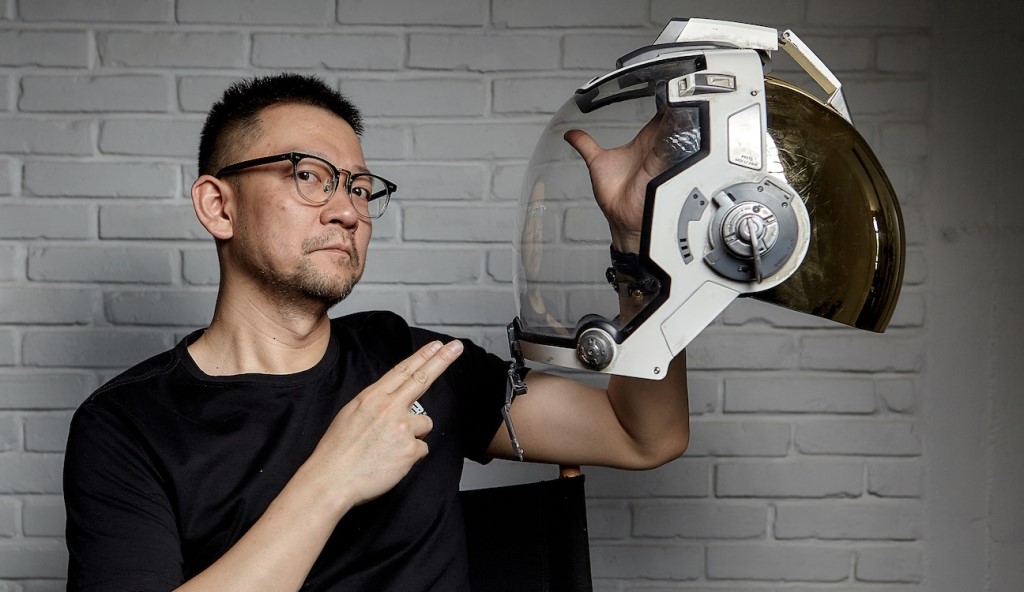AUDIENCES AND CRITICS worldwide have marvelled at the extraordinary special effects in Chinese sci-fi blockbuster The Wandering Earth II (流浪地球2).
There are gigantic spaceships, swarms of drones, mid-air battles in fighter jets, and a breathtaking “elevator to space” which takes astronauts from Earth to a space station above the atmosphere.

We’ve come to expect eye-catching special effects from Hollywood, but many have remarked that China has caught up unexpectedly quickly. Director Guo Fan (郭帆), also known as Frant Guo, was sent to California in 2014 to learn from the masters—and says that Avatar director James Cameron has been a big influence on him.
The new movie tells the story of mankind working together to create systems which can propel the planet Earth out of its orbit as the Sun starts to expand. The story is set in the time period before the previous movie in the series, which focuses on the planet’s journey after it has begun moving.
Click below to watch a Fridayeveryday discussion of the movie, are scroll down to read more about the special effects.
MULTIPLE STAGES
The movie, which stars renowned action star Wu Jing and artists Andy Lau and Li Xuejian, was shot in a giant multi-billion yuan film and TV production complex called China Movie Metropolis (東方影都) in Shandong’s Qingdao.

More than 100 sound stages were built, including realistic-looking space stations, spacecraft and space capsules. A touching climatic scene featuring Andy Lau talking to his daughter underwater was shot in a pool eight meters deep, filled with millions of gallons of water.

The visions of a deteriorating Earth are also startling. Viewers see cities rotting away, including Beijing and Shanghai. Guo and his team imagined how the physical environment and weather of the Earth would significantly change if the Sun started burning at a destructive rate. They curated more than 5,300 concept images, and made some 95,000 props, to create more than 3,300 visual effect shots.

Advanced 3D printing technology was used to print many of the props. Director Guo partnered with 3D printing companies in Dongguan to curate dozens of spacesuits, a quantum super-computer, and exoskeleton suits.
Also, the printing technology sped up entire production process. Props can be produced in three to five days after concept images were finalised. If items are damaged in the filming process, new sets of props can be produced swiftly in Dongguan and dispatched to Qingdao.
REAL JET FIGHTER

Meanwhile, there’s one element that foreign audiences may miss – although Chinese audiences who follow their country’s military development will enjoy. Those are the scenes celebrating China’s real-life stealth fighter jet known as the J-20.
In the movie, it is deployed to safeguard the astronauts when their mission is attacked. To film the shots, Guo and his engineering team produced a model of the fighter jet, with both the exterior shape and the internal cockpit closely modelled on the real thing.
The fighter jet has the ability to take off and land vertically—and its super-fast travel speed is well illustrated in the film.
QUANTUM COMPUTING

Another element where real life introduces into the movie is the use of quantum computing. China is one of the leaders in developing the new type of computing, along with the United States and Canada.
A surprisingly important voice in the film (especially if you watch the hidden scene tucked into the middle of the end credits) is a quantum computer known as the W550, which turns that label upside down to give itself the name MOSS, as it quietly becomes sentient. While many have remarked that there is no real “bad guy” in the movie, the director drops hints that computer intelligence is developing in a creepy way—and critics believe this is a hint of the theme of a third movie in the series.

There’s one more use of technology that has been done so well that audiences may not even notice it. The movie spans several decades, so actors need to go from young to old. To achieve this in the past, young actors were simply given false white hair.
But these days, audiences demand more. So the team used computer-generated effects to slim and smooth some actors’ faces to make them look younger in the scenes set in earlier decades.
Reviews of the movie have ranged from enthusiastic to surprised to rather bitter (the New York Times). Yet virtually all of them have noted the remarkable achievement of the visual effects teams.
China is new to the blockbuster action sci-fi movie genre. Still, The Wandering Earth II has set a new benchmark for the Chinese movie industry in terms of production scale, complex themes, and spectacular visual effects.
All images from the movie, courtesy of the China Film Group Corporation.
